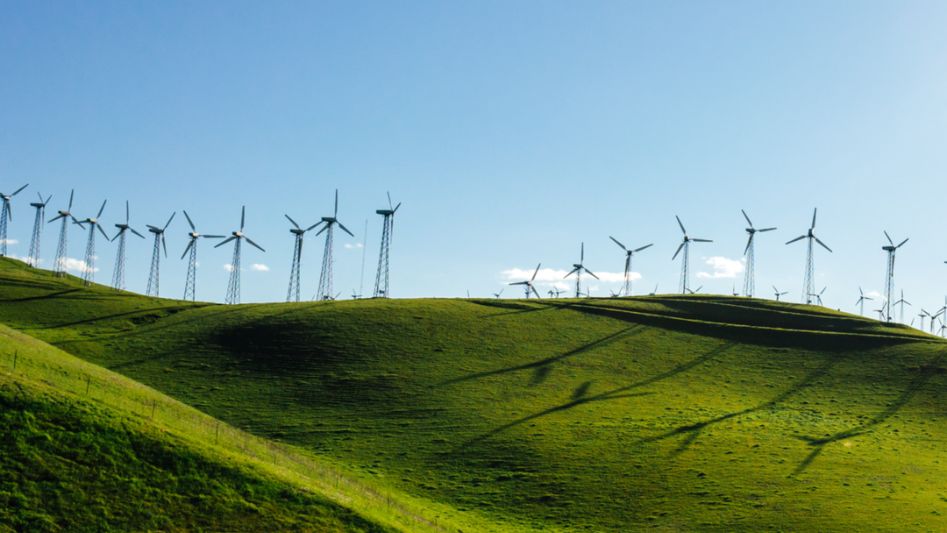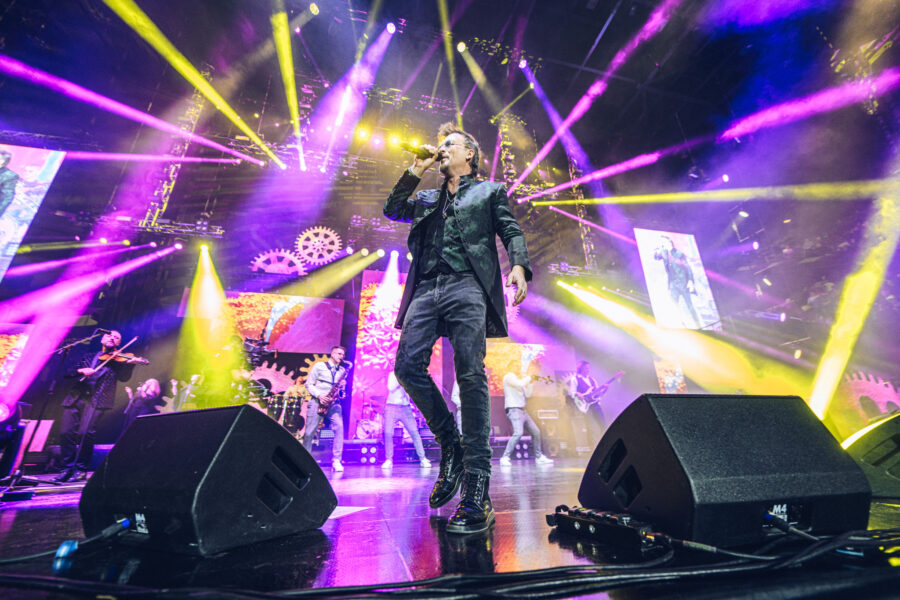Harnessing The Wind: The Potential Of Wind-Powered Trains For A Greener Future

Table of Contents
The Technological Feasibility of Wind-Powered Trains
The integration of wind energy into train propulsion systems is an ambitious yet achievable goal. Several technological approaches are being explored, each with its own set of advantages and disadvantages.
One approach involves incorporating wind turbines directly onto the trains themselves. Imagine a streamlined train design featuring small, efficient wind turbines that capture kinetic energy as the train moves. Another approach focuses on harnessing wind energy from strategically placed wind farms alongside railway lines. These wind farms could power electric trains through a dedicated energy grid, supplementing or even replacing traditional electricity sources. A hybrid system combining both onboard turbines and off-board wind farms could offer the most robust and reliable solution.
The mechanics are relatively straightforward: wind turbines convert wind energy into rotational energy, which is then transformed into electricity through a generator. This electricity powers the train's electric motors, propelling it forward.
Several research projects are currently underway exploring various aspects of wind-powered train technology. Examples include:
- The "Wind Train" concept: This ambitious project explores the feasibility of integrating small wind turbines directly onto the train carriages.
- Wind farm integration projects: Research is ongoing to explore the optimal placement and design of wind farms adjacent to railway lines to efficiently power electric trains.
- Hybrid system development: Engineers are investigating systems that combine onboard wind turbines with energy sourced from off-board wind farms and grid electricity.
While the technology shows promise, current designs face limitations in efficiency, particularly at lower wind speeds. The intermittent nature of wind also presents a challenge, requiring effective energy storage solutions.
Environmental Benefits and Economic Considerations
Wind-powered trains offer significant environmental advantages over traditional diesel or fossil-fuel-powered electric trains. By replacing fossil fuels with a renewable energy source, they promise a substantial reduction in greenhouse gas emissions, contributing to a cleaner and healthier environment.
The potential for cost savings is also considerable. While the initial investment in wind turbine technology and infrastructure might be high, the long-term operational costs are significantly lower due to reduced reliance on expensive fossil fuels.
The advantages of wind-powered trains are manifold:
- Significant reduction in carbon footprint: A drastic decrease in CO2 and other harmful emissions.
- Lower operating costs in the long run: Reduced fuel dependence translates to considerable savings.
- Improved air quality: Less air pollution improves public health.
- Reduced noise pollution compared to diesel trains: Creating a quieter and more pleasant travel experience.
Challenges and Obstacles to Widespread Adoption
Despite the potential benefits, several challenges hinder the widespread adoption of wind-powered trains. The intermittent nature of wind power is a major obstacle. Wind speeds fluctuate constantly, requiring robust energy storage solutions—such as advanced batteries or pumped hydro storage—to ensure a consistent power supply.
Economic barriers also exist. The high initial investment costs associated with developing and implementing wind-powered train technology can be daunting. Furthermore, integrating these systems into existing power grids may present significant technical and logistical challenges.
Key challenges include:
- Intermittency of wind power: Ensuring a consistent power supply is crucial for reliable train operation.
- High initial capital expenditure: The upfront cost of implementing wind-powered train technology is substantial.
- Integration with existing power grids: Seamless integration is crucial for efficient energy distribution.
- Need for advanced energy storage technologies: Effective energy storage is essential to overcome the intermittency of wind power.
- Potential impact on landscape aesthetics: Careful planning and design are needed to minimize visual impact.
The Future of Wind-Powered Trains and Future Research Directions
The future of wind-powered trains hinges on advancements in wind turbine technology and energy storage. More efficient wind turbines, capable of harnessing energy from lower wind speeds, are crucial. Similarly, breakthroughs in battery technology are needed to provide reliable and cost-effective energy storage.
Government policies and incentives play a vital role in fostering innovation and accelerating the adoption of wind-powered trains. Subsidies, tax breaks, and supportive regulations can help make this technology economically viable. Collaboration between researchers, engineers, policymakers, and the private sector is essential to overcome the existing challenges and unlock the full potential of this sustainable transportation solution.
Potential future developments include:
- Improved wind turbine designs: More efficient and cost-effective turbines will be crucial.
- Advanced battery technology for energy storage: Higher capacity, longer-lasting batteries will be needed.
- Smart grid integration for optimized energy management: Smart grids can improve efficiency and reliability.
- Government subsidies and tax breaks for green transportation: Incentives are crucial for promoting adoption.
Embracing the Power of Wind for a Greener Tomorrow
Wind-powered trains represent a significant step towards sustainable transportation. While challenges remain, the potential environmental and economic benefits are compelling. Investing in wind train technology is crucial for a sustainable future. By overcoming the technological and economic hurdles through continued research, smart policy, and collaborative innovation, we can pave the way for a greener tomorrow, harnessing the power of wind for efficient and environmentally friendly train travel. Let's embrace the power of wind and explore every avenue to make wind power trains a reality, unlocking truly sustainable train solutions for generations to come.

Featured Posts
-
 Britains Got Talent Live Show Interrupted What Happened
May 04, 2025
Britains Got Talent Live Show Interrupted What Happened
May 04, 2025 -
 Nova Knjiga Gibonnija Drvo I Koncert U Sinagogi Ekskluzivna Najava
May 04, 2025
Nova Knjiga Gibonnija Drvo I Koncert U Sinagogi Ekskluzivna Najava
May 04, 2025 -
 Yellowstone National Park Vicinity 7 Dead In Fatal Truck And Van Crash
May 04, 2025
Yellowstone National Park Vicinity 7 Dead In Fatal Truck And Van Crash
May 04, 2025 -
 Katie Nolan Breaks Silence Her Response To Charlie Dixon Accusations
May 04, 2025
Katie Nolan Breaks Silence Her Response To Charlie Dixon Accusations
May 04, 2025 -
 Foxs Coverage Of The Indy Car Series A New Era Begins
May 04, 2025
Foxs Coverage Of The Indy Car Series A New Era Begins
May 04, 2025
